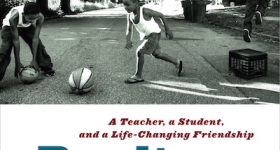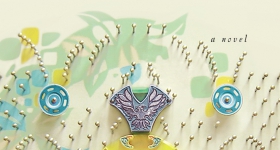In her fourth and most stunning book, Lolas’ House: Filipino Women Living With War (2017), M. Evelina Galang unwaveringly records the full-bodied lives, the heartbreaks, and the resilience of sixteen comfort women from the Philippines during World War II.
The Filipina comfort women, endearingly called lolas (the Tagalog word for grandmother) by activists in the redress movement for an official apology from Japan, were captured and systematically mass raped by the Imperial Japanese Army. It is estimated that 400,000 women across the Pacific, mostly of Korean descent (and even many Japanese women), were involuntarily trafficked and forced to serve in “comfort stations,” militarized brothels patrolled by the Kempeitai, the Japanese Army’s military police. Many Filipina comfort women were kidnapped and forced to watch the murder of their families before them. Many were held in makeshift garrisons that were not even designated the status of "comfort" stations by the Japanese NGO Asian Women’s Fund, thus reducing the possibility for receiving later reparations. Many of the Filipina comfort women were treated differently than their Korean counterparts, who were forcibly mass trafficked and held as prisoners; the Filipina comfort women (like many of their Chinese counterparts) were captured as retaliation against guerrilla activity. In all these variations of status, the universal fact is that all comfort women suffered greatly, whether in “official” comfort stations or in makeshift garrisons.
This is Galang’s first nonfiction work and it took her eighteen years to write. It is a work of documentation, a vehicle of witnessing, and an archive of war stories with testimonies of strong, fearless elders. Galang begins telling the stories of the lolas by grounding the reader in her own journey and deep relationship with them. It is like what one of the grandmothers, Lola Regina, once said to Galang: “The stories have entered [your] bodies.”
To read this collection of testimonies is to experience a transference of trauma and experience. It is quite easy as a reader to become overwhelmed by taking in their stories, one-by-one, photograph-by-photograph, recollection-by-recollection of each site. But what makes Lolas’ House so masterful is the structure in which Galang chooses to ground the lolas’ stories. She contextualizes the grandmothers’ revelations in history and time and slowly reveals the details, struggles, and disappointments of the comfort women movement, a globalized and elongated fight for redress and an official apology from the Japanese government. She describes her work among transnational activists, as she both works in solidarity for the grandmothers and faces the difficulties of coming into the movement as an American outsider. Galang also centers the lolas’s own voices, giving them full-stage to recount their capture and experiences as prisoners-of-war and she conveys the cacophony of language that represents the unifying horror of the lolas, who come from a wide range of parts of the Philippines with hundreds of different dialects.
I am a granddaughter of a woman who was held hostage by the Japanese and gave birth in a makeshift garrison during the war because my grandfather was a guerrilla fighter and major in the United States Army Forces in the Philippines - Northern Luzon (USAFIP-NL). Given these circumstances, my grandmother was most likely a comfort woman. I am indebted to Galang for giving me the stories of the lolas that my own grandmother could not express in life. I only found out about my grandmother’s capture on the day of her funeral, when one of her sisters interrupted the processional and confessed details about the woman who raised me. This is why Galang’s book goes beyond documentation, goes beyond just recounting to us the lolas’ testimonies: We witness them, experience them as Galang witnesses them in her retelling and her memory of the women she deeply loves.
We enter the story as Galang enters their stories: She comes armed with four Filpina-American students, bright-eyed and unsure of what exactly they are entering into. Her first day of meeting the lolas in 1999 takes place at Lila Pilipina: Lolas’ Center, an organization with different sites in Metro Manila dedicated to the comfort women. From this epicenter, Galang then intersperses brief chapters switching from historical context. She details the story of Lola Maria Rosa Henson, the very first Filipina comfort woman to come out in 1992, after whom more than 170 lolas bravely followed suit. Galang then includes the personal, in-moment accounts of the sixteen lolas she interviewed as a Senior Fulbright Scholar, corroborating their testimonies with the human rights lawsuits they filed in 1993 at the Tokyo District Court of Japan. One of the grandmothers, Lola Urduja, who was abducted by the Imperial Japanese Army in 1944, admonishes her: "What is it that you want, Evelina? Why are you so bound and determined to tell this story? You are not one of us." Here Galang puts into question what it means to be a witness, to bear witness to trauma, intergenerational trauma, to carry trauma in one’s bones.
James Baldwin, in an interview with Julius Lester in The New York Times, once said: “I have never seen myself as a spokesman. I am a witness.” Galang builds and creates what it means to be a witness, not a spokesman, for her as a Filipina American raised in Wisconsin among the descendants of Germans and Poles. For Galang, to be a witness means to carry on the stories of her elders but not the collective, intergenerational trauma that seeks to rupture them. The sociologist Kai T. Erickson describes the function of collective trauma as “a blow to the basic tissues of social life that damages the bonds attaching people together [...] so that ‘I’ continue to exist, though damaged, and ‘you’ continue to exist, though distant and hard to relate to. But ‘we’ no longer exist as linked cells in a larger communal body.” That is to say, trauma’s function is to forever destroy the bonds we make and need in order to heal. In a similar vein, Galang references the passing of Iris Chang, author of The Rape of Nanking: The Forgotten Holocaust of World War II (1991), and her deep connection with Chang’s own suffering as she continued to research and interview survivors of the 1937 Nanking Massacre. She says:
When, in November 2004, I hear of the suicide of author Iris Chang, I cannot help myself. I mourn. She was a daughter of Chinese immigrants, an American writer who went abroad to document the narratives of those Chinese survivors of the Nanking Massacre for her book “The Rape of Nanking.” I can never know what happened, but I can only imagine how she felt. I know what it means to be born an American of immigrant parents, and to return to that homeland to hear the stories of wartime rape and torture on your elders, to feel the drive to right that wrong. To make a promise to see that justice done in the face of the impossible. Even if your only weapons are words, are testimonies, are stories.
These stories, their voices, their excavated memories of the comfort women — they are weapons, huwes de kutsilyo: justice by knife. They are vestiges of the brutalities of war. Galang defines the phrase with such knifing imagery, relentless honesty:
The direct translation of huwes de kutsilyo is justice by knife. It is that moment when the enemy troops slay the earth, the animals, the people. There is nothing just about it.
When the lolas talk about huwes de kutsilyo they describe a showering of bullets. They hear the thud of brothers, sisters, mothers, and fathers falling heavy to the ground.
The lolas tell you stories of babies thrown up in the air and caught by the end of a bayonet. One lola has images of her father being skinned alive playing over and over. She cannot stop seeing it. She cannot stop. This then is not justice by the knife.
Huwes de kutsilyo is the most violent moments of war.
The stories of the lolas’ survival and their love of living and others bring about the commanding power of who the women are. Their stories are huwes de kutsilyo — justice by knife. Lola Catalina, Lola Virginia, Lola Lucia, Lola Pilar. Lola Benita, Lola Cristita, Lola Narcisa, Lola Violeta. Lola Prescila, Lola Dolores, Lola Piedad, Lola Josefa. Lola Atanacia, Lola Urduja, Lola Carmencita, Lola Remedios. Say their names. They all deserve true justice, now, even if some have passed, and even in death, like my own grandmother. It is their wish, their command, in their bravery of stepping forward on the global stage, despite being ridiculed over and over again as tira ng Hapones — Japanese leftovers — to never allow what happened to them happen again. Remember their stories. Let them knife, split, open you up — and with mercy, let them enter your bodies, so that we may never forget.










Comments